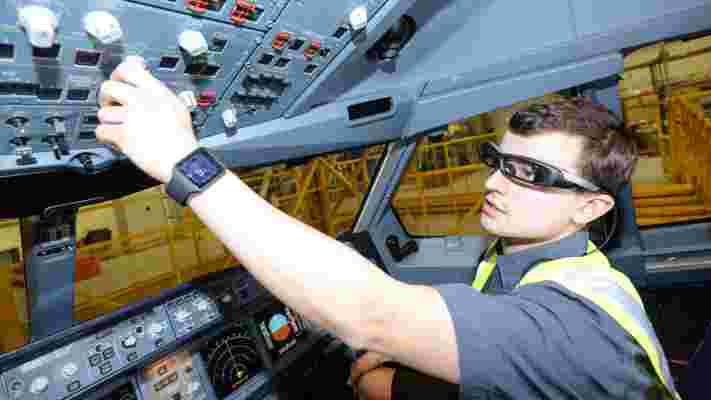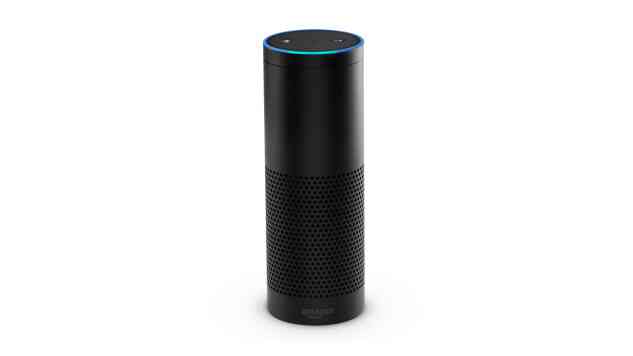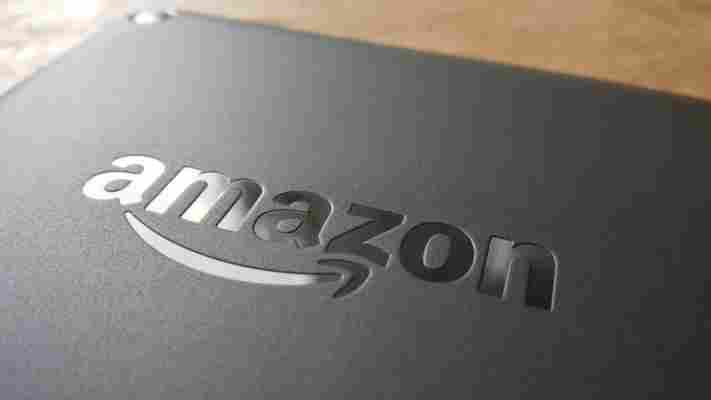Virgin Atlantic has announced its latest savvy PR tie-up with new technology. Last year, it ran a six-week trial using Google Glass for Upper Class check-ins and recently announced it’s expanding that effort . It also tried out Apple’s iBeacon tech . Now it’s turned to Sony smart devices.

From next week, engineers working on Virgin Atlantic aircraft at Heathrow will be conducting an eight-week trial of Sony’s SmartEyeglass Developer Edition and SmartWatch 3 , along with tablets and smartphones from the company.
The company says using the smartglasses should remove paper from some engineering processes and reduce the number of journeys engineers need to make between aircraft and technical control.
During the trial, Virgin staff will receive notifications about job allocations and changes to tasks on the SmartWatch 3. They’ll also use the SmartEyeGlass to take photos and video, which will be fed to an app on their smartphones.
Live video from the smartglasses will also be streamed to office-based engineering staff so they can offer speedier technical assistance.
It all sounds like a pretty sensible way to implement new smart devices in the work place. Other companies like Vuzik have been putting smartglasses in the hands of engineers for some time.
The big question is whether Virgin will stick with the technology when the trial is up or if this is just another clever bit of promotion.
➤ Virgin Atlantic
Image credits: Virgin Atlantic
Read next : See What It’s Like to Wear Sony’s Clip-on Heads-up Display
Amazon Echo is now available to buy without an invitation in the US
Amazon has announced that its connected speaker, the Amazon Echo , is now available to all its customers in the US, not just ones with an invite.

The company launched the voice-controlled device at the end of last year with Amazon Music, Prime Music, iHeartRadio and TuneIn integrations.
It has since added support for Pandora , Audible and home automation gadgets including WeMo and Philips Hue , IFTTT and Google Calendar.
Echo can also offer up traffic information, sports scores and schedules. It’s powered by software that Amazon has dubbed Alexa, its rival to Cortana and Siri.
Previously Echo was only available by invitation. Now it’s available for $179.99 and will start shipping from July 14.
➤ Echo [Amazon]
Read next: Amazon Echo can now turn appliances on and off thanks to WeMo and Hue integrations
Amazon’s new $50 Fire tablet is perfect for people who aren’t really interested in technology
As much as we love to surround ourselves with the newest tech, it’s easy to forget that there are huge numbers of people out there who aren’t in the slight bit interested in it.

They’re the sort of people who walk into a phone or computer shop with no clue what models are on offer and leave with whatever seemed like the best deal based on the recommendation of the salesperson in store. There’s nothing wrong with that; for lots of people a laptop, phone or tablet is a tool, a means to an end and nothing more.
Of course, what that often means is that they’re going to leave the store without having gotten the best possible deal for their cash – research is king when it comes to your next tech purchase. However, Amazon’s new $50 Fire tablet is ideal for this sort of customer – not least of all because that crazily low price tag actually delivers a usable device.
Clearly, Amazon hopes that by selling the tablet at a low cost, it can pick up some additional revenue through its bundled services and retail operation, and it likely will.
The new version of the Fire OS keeps to the same formula of showing you a mix of your own content and apps, and showing you a whole bunch of recommendations of other things you might like.
For an experienced Android user, this will likely be annoying – compounded by the fact that there’s no access to Google’s Play store out of the box, just Amazon’s App Store. However, for the averagely disinterested non-techie, that’s probably not going to be a huge problem – in fact, if they’ve ever used Amazon, it’ll probably be convenient.
Before going any further, let’s clear up a potential miscommunication – when I say it’s ideal for people who aren’t that interested in technology itself, that doesn’t mean the same thing as not being interested in the using or reaping the benefits of technology.
For example, the average user may well do some of their shopping online via Amazon, and as a result, they may well even have an Amazon Prime subscription – the free delivery options are pretty enticing, even without all the other added benefits. That doesn’t mean they’re interested in the latest phone or tablet specs though, just that they like the convenience and competitive pricing of shopping online – if they also realize that this includes free Prime TV and Movie streaming, as well as a slightly shonky music service, that’s all the better.
It’s this sort of user who might find it hard to shell out the $499 or more on an iPad Air 2 or Smasung Galaxy Tab 4, which comes in at somewhere between $160 and $200, but who won’t mind taking a punt on a $50 option. Amazon’s by no means the first to offer a 7-inch tablet at this price, but it is the first from a recognizable household name, and that goes a long way with the technology disinclined.
Hardware-wise, the Fire tablet maxes out at a resolution of 1024 x 600 pixels – not enough to please anyone looking for a full HD experience, but enough for casual, occasional use without it being a problem. Other key specs include 8GB of internal storage space, basic front and rear-facing cameras and a 1.3GHz quad-core processor. Amazon says the battery will last up to seven hours on a single charge too.
Those actual numbers don’t matter so much for the intended audience though. What really matters is what they mean, and what they mean is that you can buy a tablet for $50, use it for video calling or selfies, play games, listen to some music and watch a movie for hours and hours.
And when that onboard storage is full (photos and other content taken with Fire devices can be stored in Amazon’s cloud for free), you can just pop a microSD card in and carry on adding – that eliminates the tedious task of trying to clear space or backup your tablet in order to keep it usable; something that anyone who isn’t that interested in technology will likely not do anyway.
Clearly, it’s by no means a perfect device – throw a more demanding game at it and you’ll start to struggle a bit, throw a demanding game at it while you have several other demanding apps running at the same time and you’ll really notice the slowdown. Similarly, place it face up on a table or your lap when you’re watching (or listening) to something and that rear speaker is going to suffer, but it’s easy to overlook for short periods when the bottom line is so low.
It’s an uninspired design of anonymous black plastic (at least the model I tested is) paired with what some would consider a hampered OS and at best middle-of-the-range hardware, but for people who want a no-frills tablet for occasional Web and app use and who don’t really care too much about the latest and greatest releases in tech land, Amazon’s Fire tablet is a bit of a no-brainer.
Right now, the Amazon Fire is showing as available from October 26 in the US and from October 22 in the UK.
➤ Amazon Fire [Amazon]
